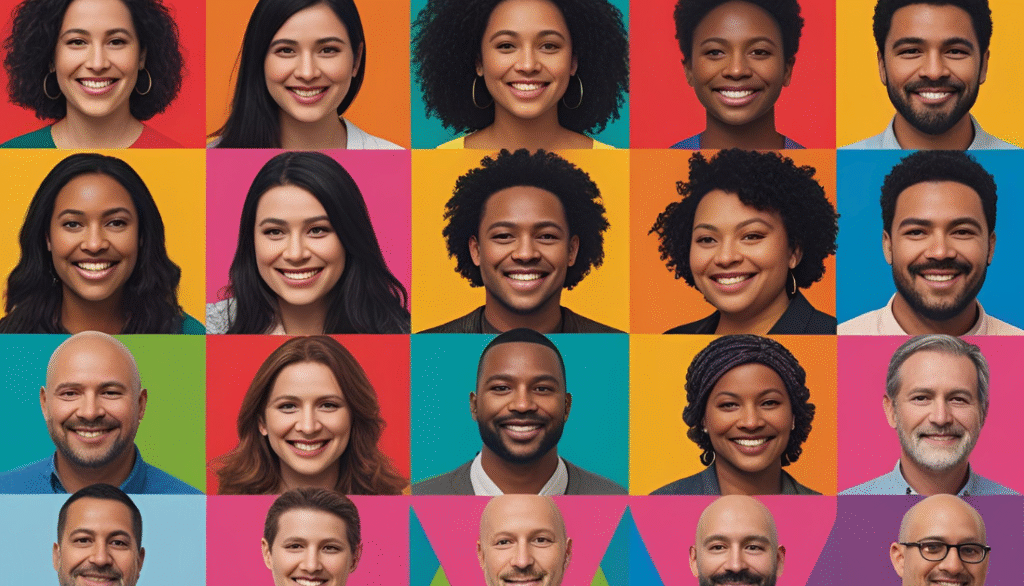Tencent has released HunyuanPortrait, an open-source AI model designed to animate static portrait images into realistic, expressive video sequences.
Highlights
- HunyuanPortrait transforms static images into expressive animations, using a reference portrait and a driving video to generate lifelike facial motion.
- Built on a diffusion-based architecture, the model prioritizes temporal consistency and detailed facial expressiveness across generated frames.
- Implicit condition control enables advanced animation fidelity, preserving the source identity while adapting to nuanced motion cues like eye direction and expressions.
- Released under a non-commercial license, the model is freely available on GitHub and Hugging Face for research and academic purposes.
- Part of Tencent’s broader Hunyuan AI suite, which includes HunyuanVideo and Hunyuan3D, supporting features like lip-sync, pose control, and audio synthesis.
- Potential applications span media production, virtual avatars, and education, offering automation for character animation and instructional content.
- Ethical considerations addressed through restricted licensing, aiming to prevent misuse in deepfake scenarios and promote responsible experimentation.
- The model’s release underscores Tencent’s growing role in global generative AI development, emphasizing openness, technical depth, and ecosystem integration.
The model, which leverages diffusion-based architecture, combines a reference portrait with a driving video to produce lifelike facial animations, including synchronized expressions, eye movement, and head poses.
Released under a non-commercial license, HunyuanPortrait is now available for academic and research use via GitHub and Hugging Face. A detailed preprint paper explaining the model’s architecture and capabilities is also accessible through arXiv.
From Static to Expressive
HunyuanPortrait’s distinguishing feature is its ability to capture fine-grained facial detail and spatial motion, enabling animations that appear natural and consistent over time. Tencent’s researchers highlight improvements in two key areas over existing open-source alternatives:
- Temporal consistency across frames
- Fine-grained controllability of facial expressions and motion
While these claims have not yet undergone independent peer validation, initial demos suggest high visual fidelity and coherence.
Architecture and Technical Approach
Built upon the Stable Diffusion framework, HunyuanPortrait utilizes a condition control encoder to isolate motion signals from identity features.
These extracted motion cues—such as head tilt or eye direction—are encoded as control signals and injected into a denoising UNet via attention mechanisms.
This architecture enables the model to maintain spatial accuracy and continuity throughout an animation, even when driven by complex or nuanced motion in the reference video.
Advanced Control Mechanisms
A major innovation in HunyuanPortrait is its implicit condition control. This technique uses pre-trained encoders to decouple motion (e.g., facial gestures, head movements) from the identity preserved in the source image.
The result is precise control over how the portrait animates—allowing for expression-driven outputs that remain consistent with the character’s visual identity.
These features make HunyuanPortrait particularly versatile for scenarios requiring both fidelity and flexibility in animation output.
Integration with Tencent’s Hunyuan Ecosystem
HunyuanPortrait is part of Tencent’s broader Hunyuan AI suite, which includes models such as HunyuanVideo and Hunyuan3D.
HunyuanVideo supports features like pose control via ControlNet, lip-sync animation, and audio generation, allowing for synchronized audiovisual experiences. Together, these models form a robust foundation for Tencent’s multi-modal generative AI ambitions.
Potential Applications Across Industries
Although still restricted to non-commercial use, HunyuanPortrait presents opportunities for a wide range of sectors:
- Media & Entertainment: Streamlining character animation in film, television, and gaming, reducing dependence on manual keyframing or expensive motion capture.
- Social Media & Virtual Avatars: Enabling more expressive, lifelike avatars for virtual meetings, video messaging, or content creation.
- Education & Training: Facilitating the creation of engaging, animated instructional content with characters capable of conveying emotion and intent.
Ethical Considerations and Responsible Use
As with many generative AI tools, ethical concerns—especially around deepfakes and identity manipulation—remain central.
Tencent has addressed this by limiting the model’s use to research and academic contexts, with commercial applications currently prohibited. This move is intended to minimize risks of misuse while encouraging innovation in controlled environments.
Context and Industry Implications
Tencent’s release of HunyuanPortrait comes amid intensifying competition among global tech companies to advance next-generation AI tools for synthetic media.
While the model is still in its early stages of adoption, its open-source nature and high-quality output reflect Tencent’s intent to play a prominent role in the evolving generative AI landscape.
As more tools like HunyuanPortrait enter the open-source domain, the boundaries between real and synthetic media continue to blur—presenting both exciting creative opportunities and ongoing questions around trust, transparency, and governance.


